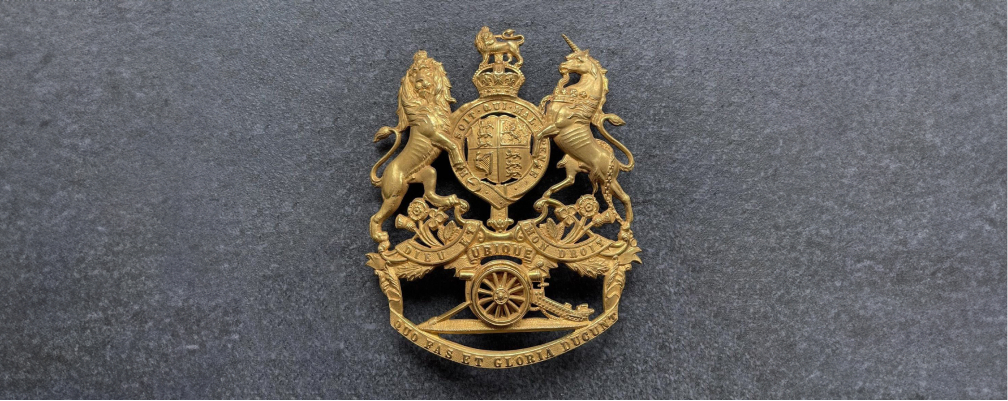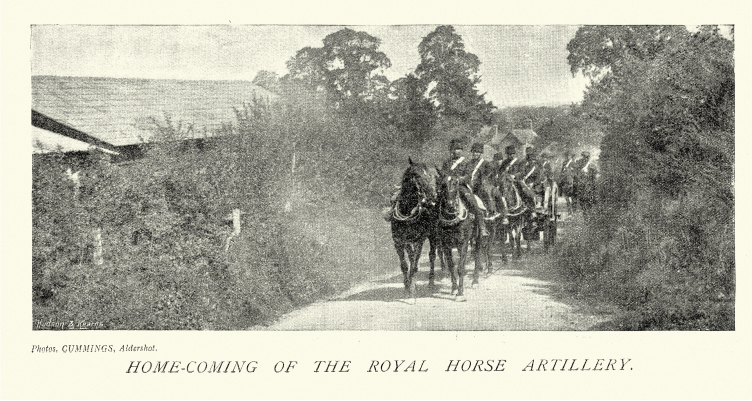Brief History of The Royal Artillery
 Royal Artillery Cap Badge
Royal Artillery Cap BadgeIn 1716 King George I issued a Royal Warrant to set up two permanent field artillery companies of 100 men each. This force soon grew in size as the demand for artillery increased.
Other artillery regiments were also set up at this time, such as the Royal Horse Artillery in 1793, which provided artillery support to cavalry units. Some of these other regiments were merged into the main Royal Artillery, such as the Royal Irish Regiment of Artillery in 1801, and the artillery of the disbanded East India Company in 1862.
 British army soldiers on exercise around Aldershot, Royal Horse Artillery, Military History, Victorian 19th Century
British army soldiers on exercise around Aldershot, Royal Horse Artillery, Military History, Victorian 19th CenturyIn 1899, the Royal Artillery was split into three arms, the Royal Field Artillery, the Royal Horse Artillery, and the Royal Garrison Artillery. The Royal Horse Artillery provided artillery support to the cavalry and continued in a separate role. The Royal Field Artillery was the largest branch, providing howitzers and medium artillery near the front line. The Royal Garrison Artillery manned the largest guns, especially those mounted in coastal and colonial forts. During the First World War, the Royal Garrison Artillery also manned the heavy guns and howitzers on the Western Front.
In 1924, the Royal Field Artillery and Royal Garrison Artillery were merged back into one regiment, the Royal Artillery. The Royal Artillery has fought in all major fields of combat, from the Napoleonic Wars, Waterloo, Crimea, India and the Colonies as well as both World Wars and conflicts thereafter.